Add an Integration Connection
Integrations allow you to exchange data with third-party applications. With the integrations feature, you can set up a connection to a third-party application and then call that connection from your playbook.
Note: To view or set up integration connections, you must be in a group that has Integration Connection permission. For more information, see Manage users.
Connection is the actual connection to the integration to include any required authentication inputs.
To add an integration:
- Log in to LogicHub.
- Click Automations > Integrations.
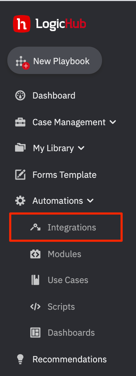
- Search for the desired Integration in the Search field.
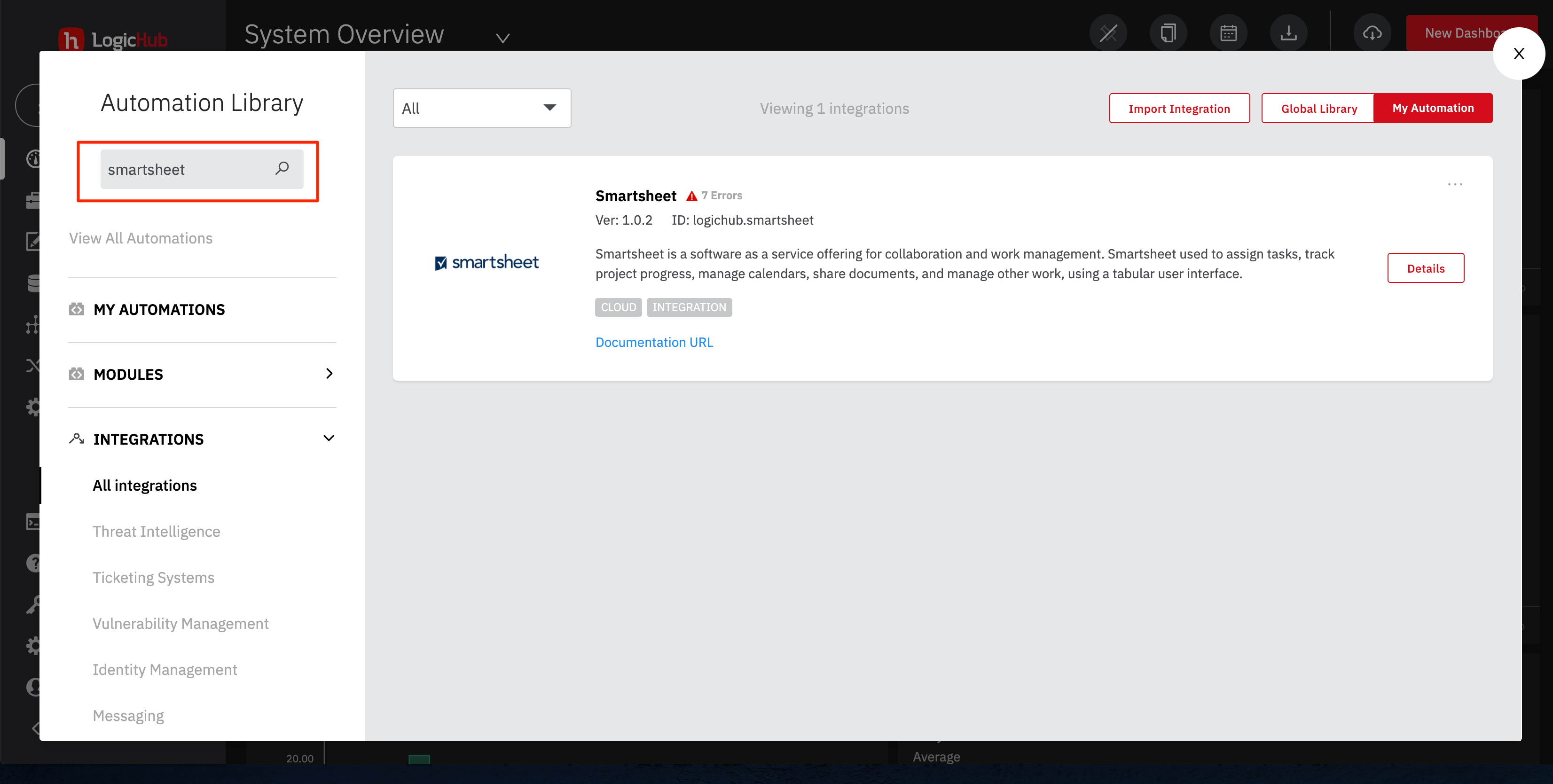
- Click Details and the (+) sign under Connections.
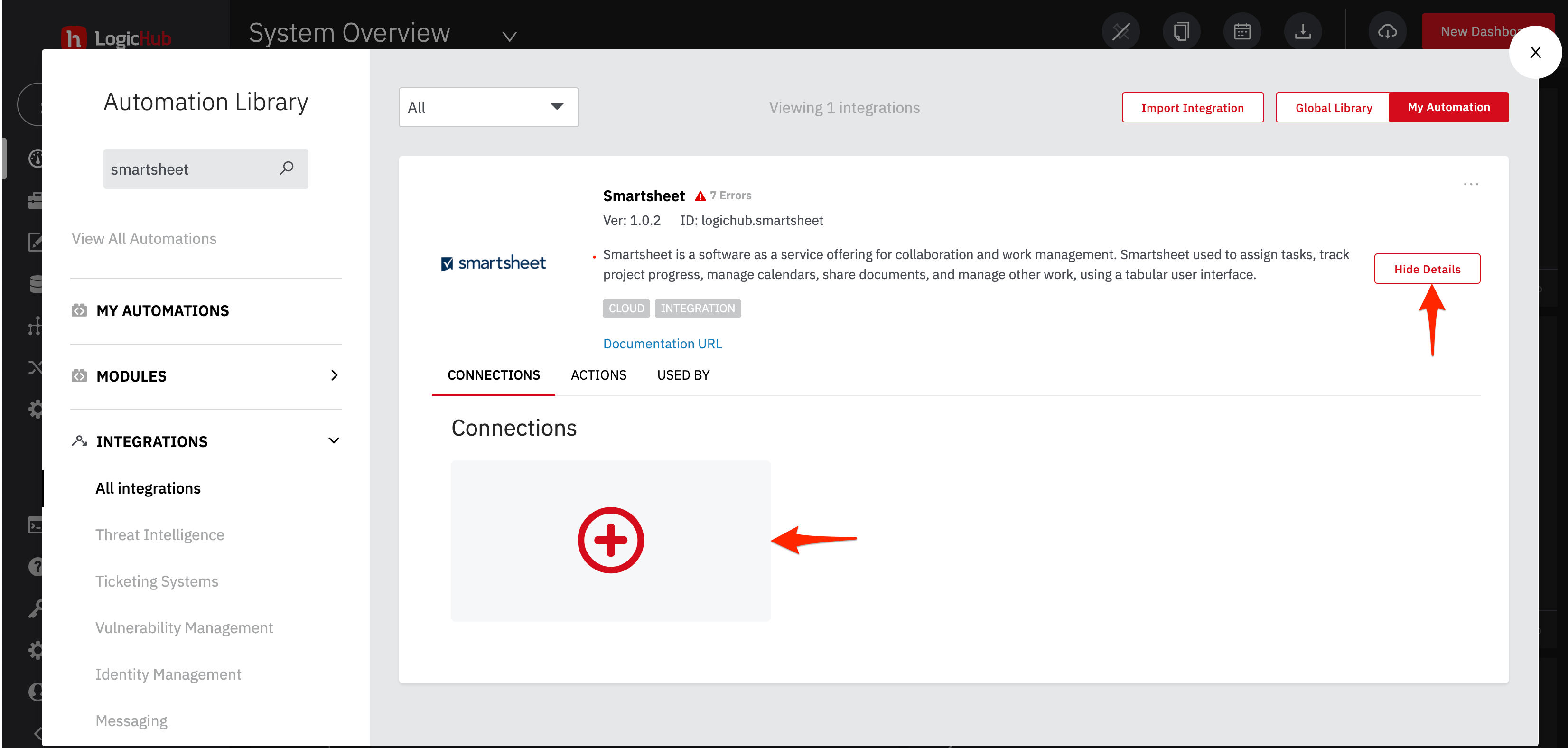
An authentication information form opens up.
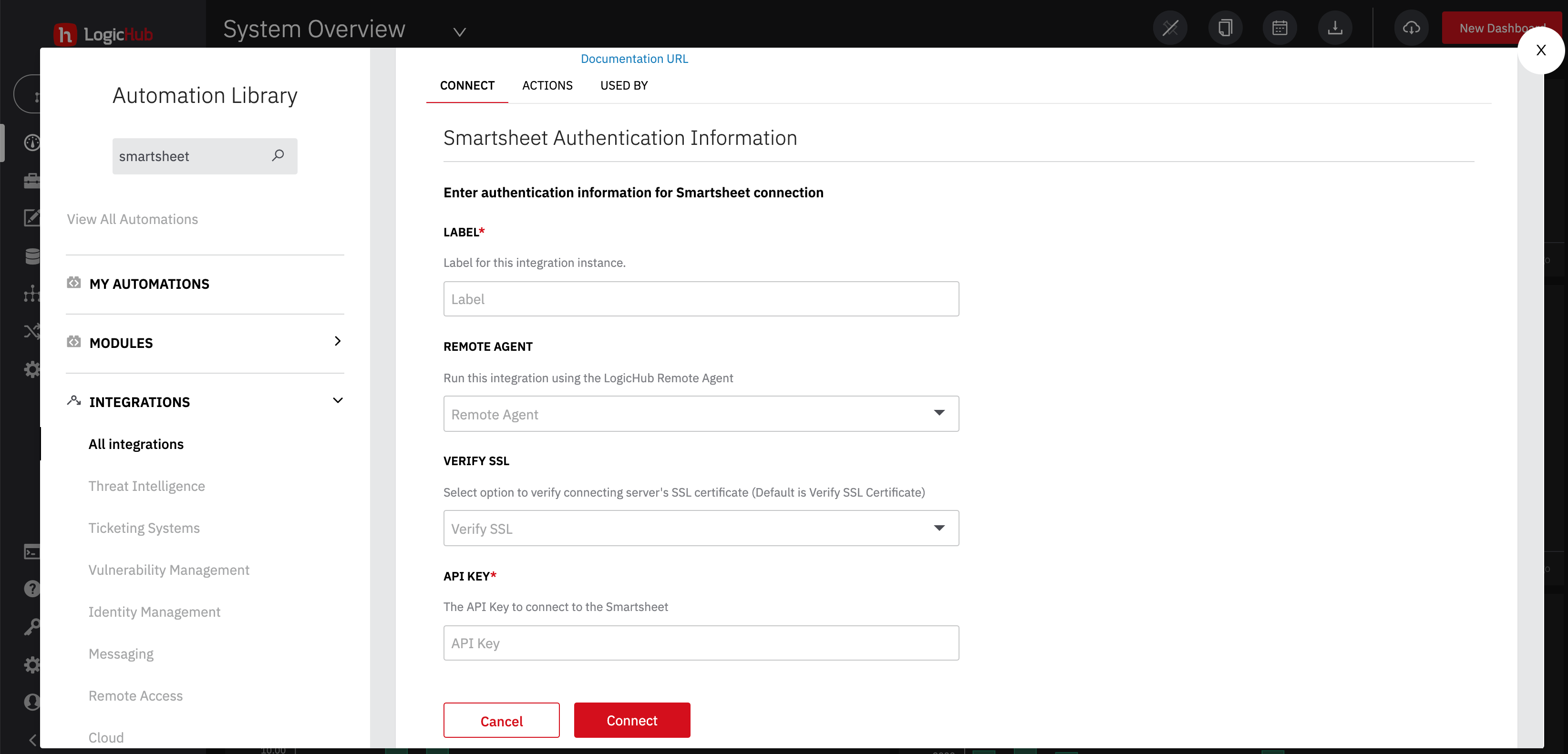
Enter the required details to connect to the third-party application and click Connect.
- Label: Name of your connection used to differentiate between multiple connections to the same Integration.
- Reference Label: Stores multiple key-value pairs.
- Verify SSL: Option to verify SSL.
- API Key: The API key issued by the third-party application. These requirements differ based on each third-party tools’ requirement.
'Add Data' Input Type for Integrations
Integrations provide the ability to store one or more sets of username and password combinations as key-value pairs including passwords. This feature is provided at the connection level.
To view the input type:
- Go to Automations > Integrations on the left navigation.
- Search or choose for any integration connection.
- Click on Details and + icon to add a new connection.
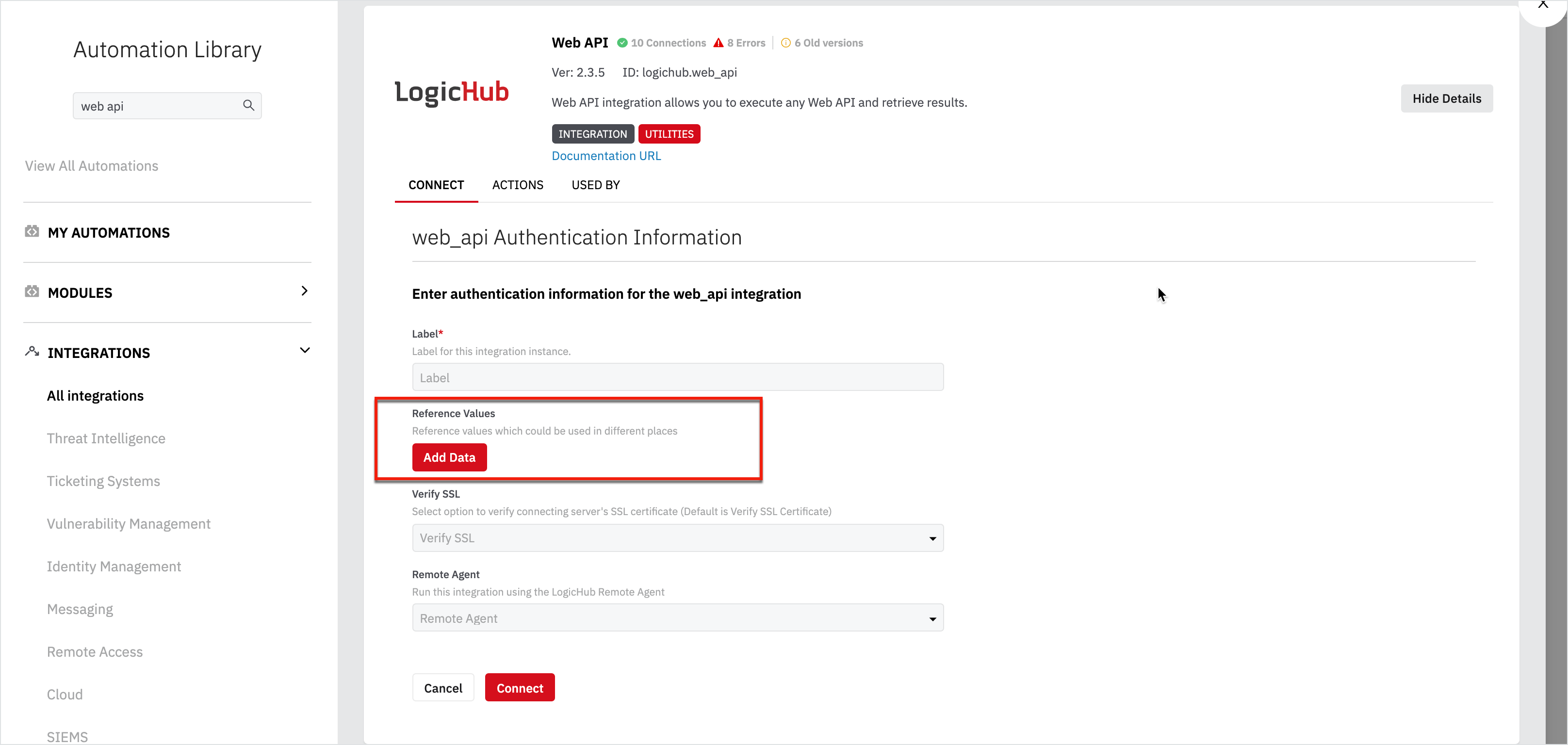
- In the integration form, the reference values field allows you to store the key-value pairs with passwords.
- Click Add Data. The Add Data form opens up.
- Enter the key and its value. The value can be of text or password value type. If the value is a password, you can hide the text using the show/hide icon. The Add Data form allows you to add multiple key-value pairs with the first column being unique variable name strings and the second being the values for lookup.
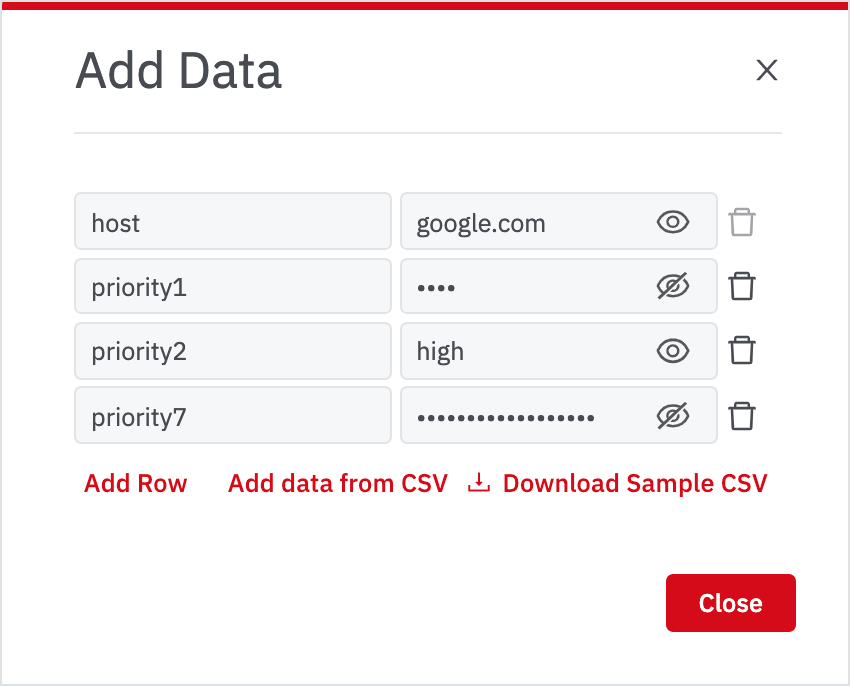
The key values can be added in a CSV file and can be added here by clicking on Add data from CSV. You can also download the CSV file by clicking on Download Sample CSV.
The connection that you created can be used to add an action.
How to Use Key-Value Pair
The following is an example (for Web API Integration) of how to use the key-value pair.
In the add action form:
- Select an integration instance.
- Select a request type.
- In the URL field, enter https://www.{{host}}. This will fetch the key-value pairs that were provided in the host key-value, which is https://www.google.com in this case. The result will show the details of google.com.
- Click Insert.
Note
To use the key-value pair, you have to use the key with a double curly bracket in connection or action in the text input field or jinja template field.

The key-value is applicable for fields in the text input or jinja template.
An integration node will be added to the playbook and the result will display the details provided in the host key-value (that is, https://www.google.com).

Updated about 2 years ago